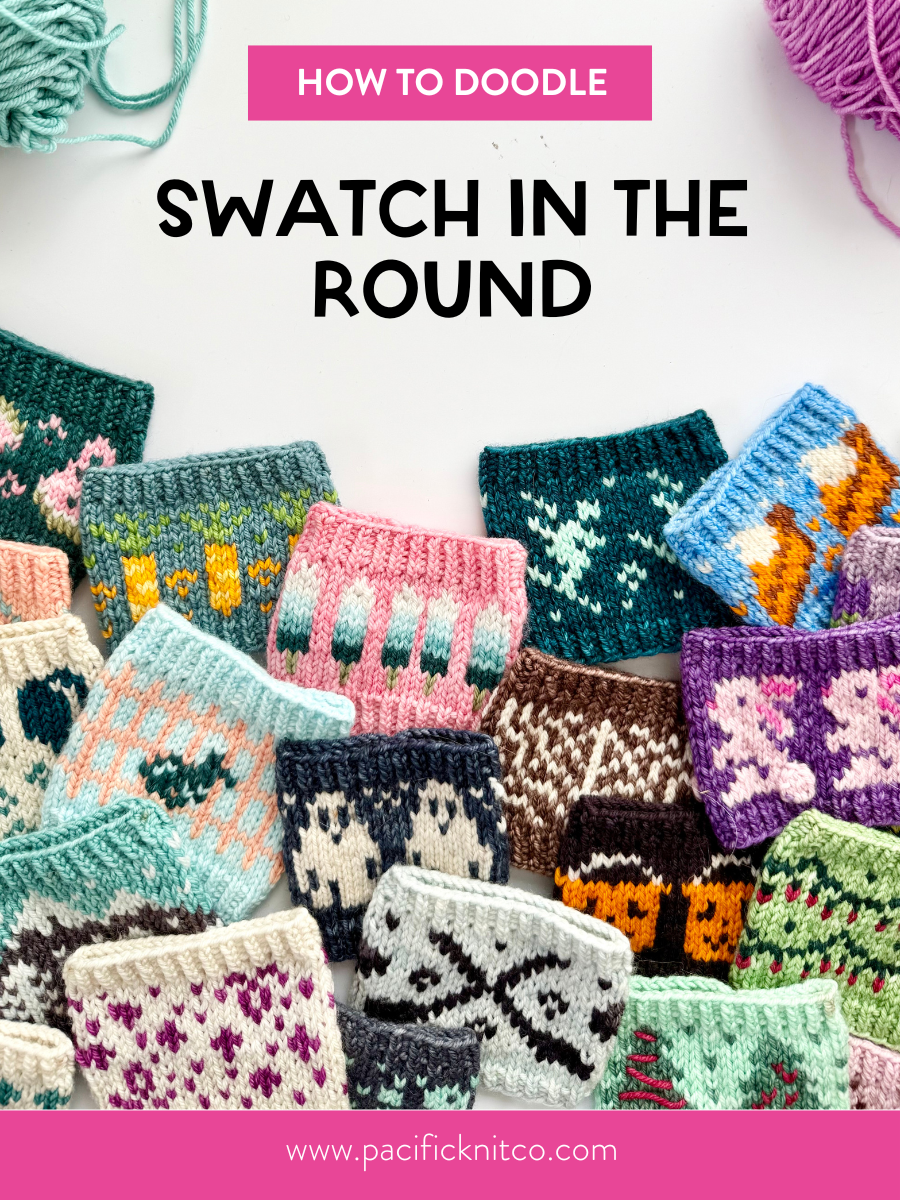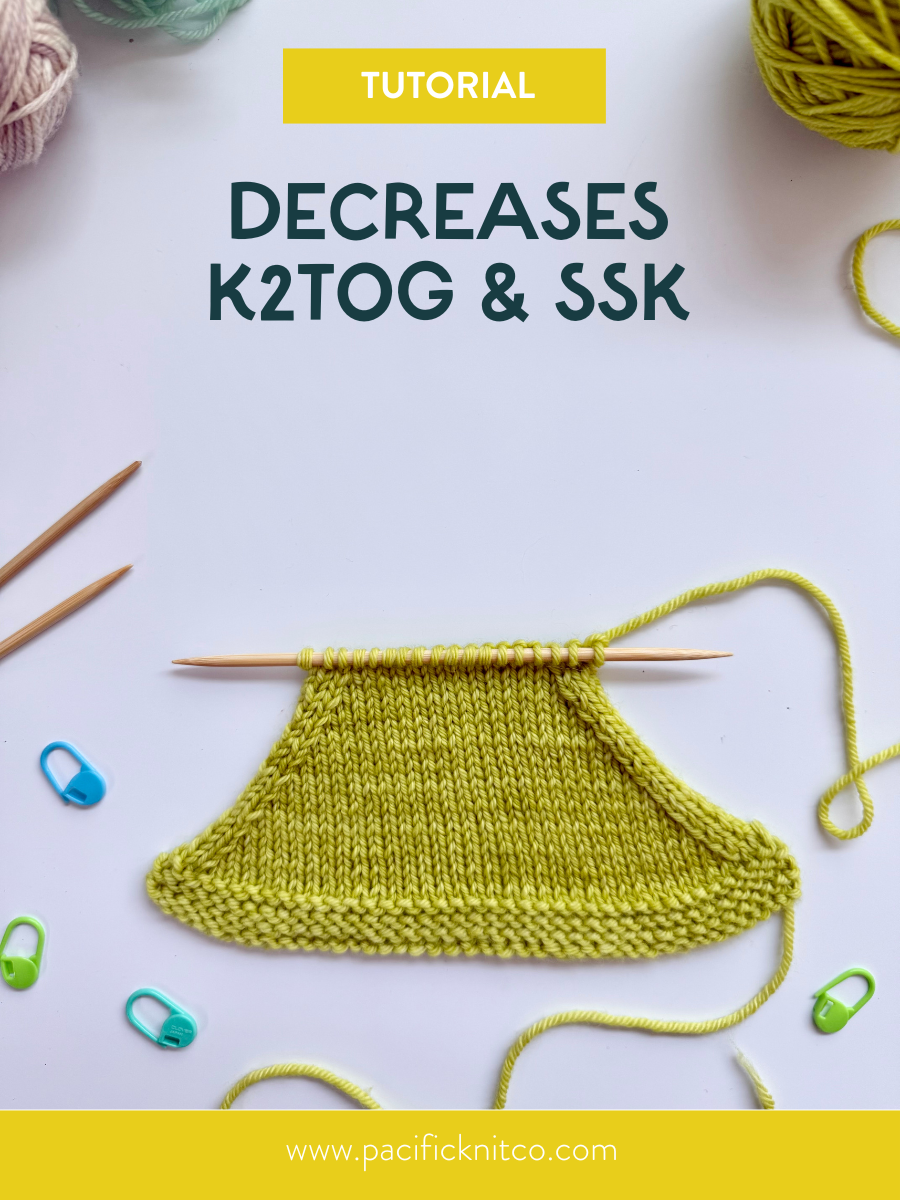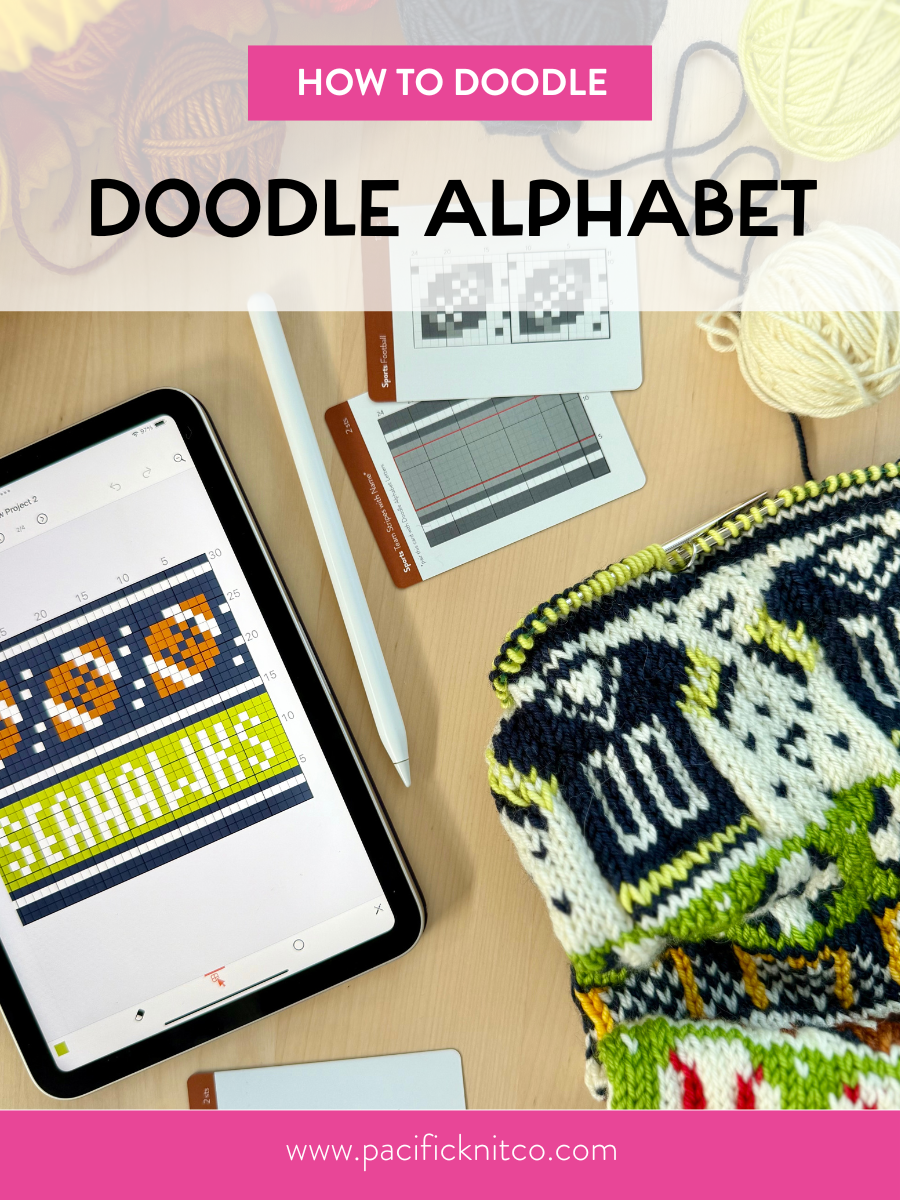Doodle Repeats: 12 vs. 24 Stitches

Have you ever wondered why we include the 'minimum stitch repeat' on all of our Doodle Charts? While every single one of our charts is standardized to 24 stitches, sometimes you might want a smaller repeat! Whether you're knitting a small item and need a half size, or if you just want to know if you can focus on a smaller piece of the chart while knitting, many of our charts can be split into smaller repeats to make them even more accessible!
Want to understand how changing your stitch count will affect your project? Scroll to the bottom of this page (or check out our post about Changing Yarn Gauge) to figure out how to modify your pattern to work for you and your charts!
Working with Full Charts
The standard stitch count for all Doodle Charts is 24 stitches. A number of our charts utilize this full width of stitches, and cannot be "cut" down into smaller stitch increments. This works well for "hero" motifs, mirrored motifs, or other more ornate designs.
Here are some examples of Doodle Charts with 24-stitch Repeats:


But some of the charts have shorter repeats! How do those work?
Using 'Half' Charts
Several of the Doodle Base Patterns call for working “half” charts, or repeats of just 12 stitches, rather than 24 stitches. This is typically used to allow more flexible sizing, especially for smaller circumference pattern shapes, such as socks or mittens. Adding 12 stitches between sizes (instead of 24) means more customizable size options for you!
While not every chart can be cleanly cut in half, there are plenty of options that allow for shorter repeats.

All of our new releases come with all the information you need to find those smaller repeats! The minimum stitch repeat (the smallest number of stitches you can split the chart into) is written at the top of the card AND marked with a box on the chart itself!
But what if I have an old version of the cards?
You can still learn how to identify this information yourself. An easy way to tell is to look for charts where the design is the same within stitches 1-12 and within 13-24. In other words, it looks like two of the exact same design within that chart.
Here are some examples of Doodle Charts with 12-stitch Repeats:


Working with even smaller repeats
Some Doodle Charts, especially those found in the Basic Doodle Patterns, can be cut down to even fewer stitches for their minimum repeat.
Here are some examples of Doodle Charts with 4-stitch Repeats:

Here are some examples of Doodle Charts with 6-stitch Repeats:


Modifying Patterns & Rounding to the nearest multiple of 24 or 12
Adjusting your cast-on and worried about how rounding your stitch count will affect your project? The following information is especially helpful if you're working with Base Doodle Pattern modifications!
Step 1 is to figure out how many stitches you need to cast on in order to get the desired new dimension of your modification:
[dimension in inches] ÷ [sts per inch] = CAST-ON STITCH COUNT
For example, if I had wanted my cowl to be 21 inches around, at 6 stitches per inch:
[21 inches] x [6 sts per inch] = 126 sts
But 126 stitches doesn't fit with 12 or 24 stitch charts, so I'd want to round that number down to 120 (divisible by 12 AND 24)
So then, to see how close 120 sts will get me to my desired dimension of 21 inches:
[number of sts] ÷ [sts per inch] = DIMENSION IN INCHES
[120 sts] ÷ [6 sts per inch] = 20 inches
Maybe that's close enough for me, maybe it isn't. But now you have all the tools you need to play around with your numbers until you have exactly the project you want.
Want more modifications? Check out our complete library of Base Doodle Modifications for Infinity Cowl, Standard Cowl, Socks, and Hats!
Happy Doodling!
Blog written by Jamie Lomax.




